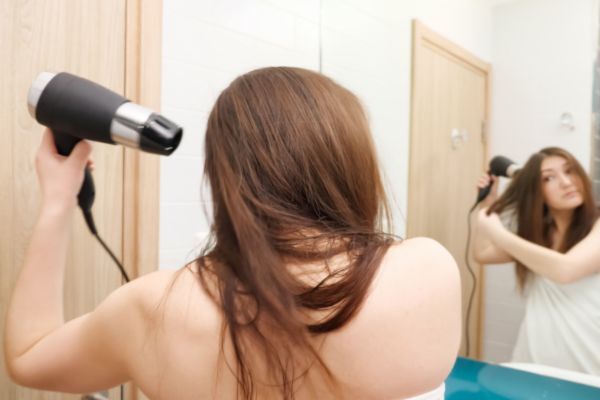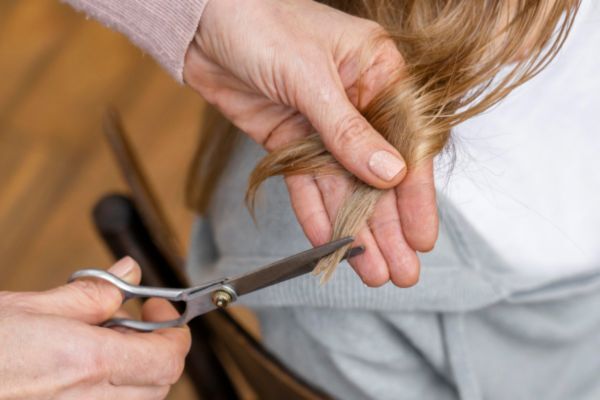How to Minimize Breakage in Fine Hair
Jul 18, 2025 | By Maria Eliza Pineda

Fine hair can be naturally soft, silky, and easy to style. However, it’s also fragile and prone to breakage. As with all hair types, fine hair should have a specialized hair care routine to suit this hair type’s particular needs. Fine hair has a smaller diameter and less protein structure which makes it more fragile than thick or coarse hair. If you have fine hair and notice that your strands are prone to split ends, frizz, and breakage, this is the ultimate guide on how to minimize breakage in fine hair and keep your locks strong and voluminous.
Understanding Fine Hair and Its Challenges
What is Fine Hair?
Hair density and thickness are completely different things despite the terms being often interchangeable. Density refers to the number of hairs your have while thickness is how thick each strand is. Fine hair is when your hair strands are thin. You can have thick density and fine hair. This just means you have more hair but thinner hair strands with smaller diameters.
Why is Fine Hair Prone to Breakage?
Fine hair has less protein structure than normal to coarse hair. This causes them to naturally be weaker and prone to damage and breaking. Putting tension to the strands can cause breakage which is why hydration and strength in your hair care routine is important. You need flexible strands that stretch rather than break so that your hair stays intact.
Gentle Washing Techniques for Fine Hair
Avoid Overwashing
Those with fine hair are more prone to overwashing than other hair types. That’s because fine hair gets oily faster and can feel greasy very quickly which will then make you want to wash your hair more often. However, this can be counterproductive as overwashing can cause an overproduction of sebum. When you wash your hair too often, the shampoo strips away your natural oils that hydrate your hair throughout the day which can send signals for your pores to produce even more oil to compensate.
Avoid overwashing by keeping your cleansing schedule to every other day at most. This prevents excess sebum buildup and helps retain moisture balance in your scalp.
Use a Mild, Sulfate-Free Shampoo
Harsh shampoos containing sulfates can strip your hair and scalp of natural oils and weaken the hair shaft. Choose a gentle, sulfate-free shampoo that is designed for fine or damaged hair. Look for ingredients like biotin, keratin, or hydrolyzed proteins to support strand strength.
Condition the Right Way
Fine hair needs moisture but can be weighed down easily. Avoid heavy conditioners that can cause buildup and use a lightweight conditioner only from mid-length to ends, do not condition the roots. This helps prevent greasiness while still nourishing the fragile parts of the hair.
Smart Styling Practices to Prevent Breakage

Limit Heat Styling
Heat styling is a regular step in a lot of people’s hair routine. However, heat styling tools all cause some amount of heat damage. If you can, limit your heat styling. Experiment with no-heat styling techniques. If you’re going to use heat, be sure to always apply heat protectant to your hair before using hot tools. Another way you can limit heat is to turn down the temperature of your tools to the lowest effective temperature.
Dry with the Cool Setting
Fine hair that is also high porosity absorbs more water faster. This can be the cause of swelling in the hair that will damage the strands. Avoid keeping your hair wet for a long period of time by drying it with a blow-dryer. Opt for one with a cool setting to avoid heat damage.
Be Gentle When Brushing
Use a wide-tooth comb or a brush with soft bristles, such as a boar bristle brush. Always start detangling from the ends and work your way up to prevent breakage. A boar bristle brush also helps with distributing oils throughout the hair evenly. This will prevent greasiness and overwashing.
Strengthen Hair Through Proper Nutrition
Protein-Rich Diet
Hair is primarily made of a protein called keratin. A diet low in protein can weaken hair and slow growth. Incorporate protein-rich foods like eggs, lean meats, lentils, and tofu in your meals to strengthen your fine strands.
Vitamins and Minerals for Hair Strength

Certain vitamins play a crucial role in hair health:
- Biotin supports keratin production.
- Vitamin C boosts collagen and strengthens hair follicles.
- Iron improves blood flow to the scalp, supporting healthy growth.
- Omega-3 Fatty Acids nourish hair follicles and reduce inflammation.
Hydration is Key
Just like skin, hair needs water to stay flexible. Many say that just by increasing the amount of water they drink, they immediately notice a difference in their hair. Drink at least 8 glasses of water a day to keep your hair hydrated from within and reduce brittleness.
Choose the Right Hair Products
Go for Lightweight Formulas
Fine hair is easily weighed down so heavy, creamy products are out. Opt for lightweight products that increase volume rather than moisture such as volumizing shampoos, conditioners, and sprays.
Know Your Alcohol-Based Product
Some types of alcohol can be very drying and turn your hair brittle. Look for Ceteatyl Alcohol in your products. This is a type of alcohol that is derived from coconut or palm kernel oil. While most alcohols cause dryness, this type of alcohol moisturizes and softens the hair.
Use Protein Treatments Sparingly
Protein can strengthen the hair, but too much can make it stiff and prone to snapping. Use a protein treatment when necessary and make sure to choose a formaldehyde-free formula such as the Mayraki Organic Hydrolyzed Keratin Instant Smoother System. This harnesses the power of plant-based ingredients including protein to strengthen the hair while also hydrating it.
Protect Hair During Sleep
Switch to a Silk or Satin Pillowcase
Cotton pillowcases cause friction that leads to breakage and split ends. Silk or satin pillowcases reduce friction and help your hair retain moisture overnight. You can also use a silk cap to preserve your style and prevent breakage.
Regular Trims and Low-Stress Hairstyles

Trim Split Ends Frequently
Split ends can travel up the shaft and cause more breakage. The ends of your hair also gets the brunt of the damage which can make them thin and stringy. Get a trim every 6–8 weeks to maintain the health of your ends and prevent further damage.
Avoid Tight Hairstyles
Ponytails, buns, and braids that are too tight put pressure on the roots and mid-shaft. Opt for loose styles and alternate hairstyles often to avoid repeated stress on the same areas.
Minimize Chemical Treatments
Fine hair is prone to damage and chemicals such as bleach and formaldehyde weaken it further. If you can, avoid these ingredients in your treatments and opt for natural, safer alternatives.
Gentle Care Goes a Long Way
All hair types have their pros and cons. For fine hair, it has a unique delicate beauty that’s both soft and dainty but it can be prone to damage. The key is to know your hair type’s needs and give it the customized care that it desires. By giving your hair the care it deserves, you can enjoy longer, fuller, and healthier hair without constant breakage.




